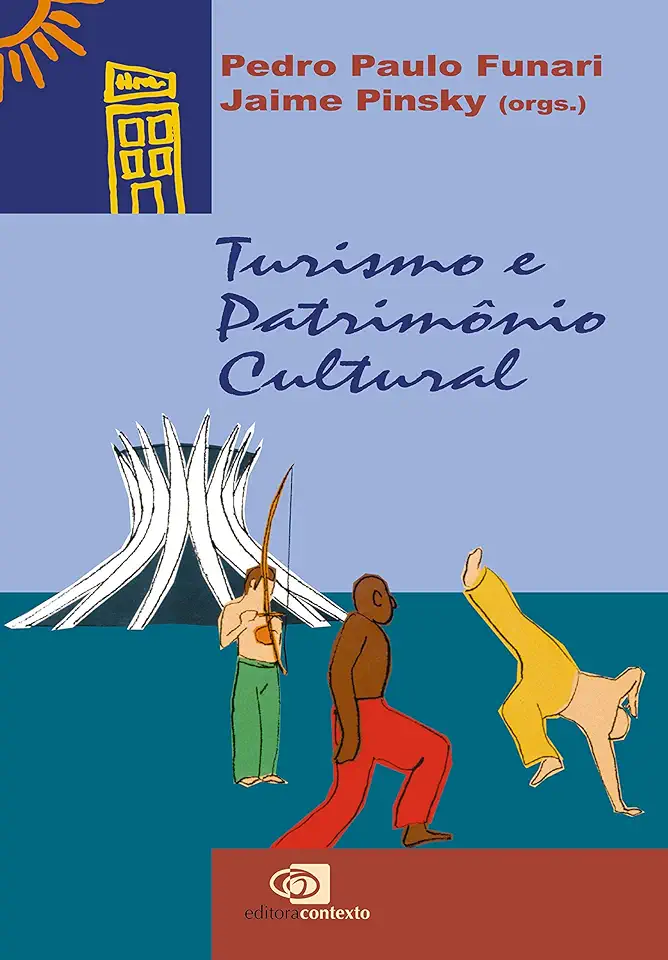
Tourism and Cultural Heritage - Pedro Paulo Funari / Jaime Pinsky
Tourism and Cultural Heritage: A Comprehensive Guide
Introduction
In today's fast-paced world, where technology and globalization have brought people closer than ever before, the importance of cultural heritage has become increasingly evident. Tourism, as a powerful industry, has the potential to play a significant role in preserving and promoting cultural heritage, fostering cross-cultural understanding, and driving sustainable development. This comprehensive guide, "Tourism and Cultural Heritage" by Pedro Paulo Funari and Jaime Pinsky, delves into the intricate relationship between tourism and cultural heritage, offering valuable insights and practical strategies for stakeholders in both fields.
Understanding the Nexus
Cultural heritage encompasses the tangible and intangible expressions of a society's history, traditions, and values. It includes monuments, artifacts, landscapes, languages, customs, and beliefs that have been passed down through generations. Tourism, on the other hand, involves the movement of people from their usual place of residence to other places for leisure, business, or other purposes. When these two spheres intersect, a dynamic interplay emerges, shaping the experiences of both tourists and local communities.
Benefits of Cultural Heritage Tourism
Cultural heritage tourism offers a myriad of benefits for both tourists and host communities. For tourists, it provides an opportunity to immerse themselves in different cultures, appreciate historical sites, and gain a deeper understanding of the world's diversity. It fosters a sense of global citizenship and promotes cross-cultural dialogue, breaking down barriers and fostering mutual respect.
For host communities, cultural heritage tourism can serve as a catalyst for economic development, job creation, and poverty alleviation. It can also contribute to the preservation and revitalization of cultural heritage, as well as the promotion of local traditions and crafts. By showcasing their unique heritage, communities can attract visitors and generate revenue, while simultaneously preserving their cultural identity.
Challenges and Opportunities
While cultural heritage tourism holds immense potential, it also presents several challenges that need to be carefully addressed. These include the risk of over-tourism, which can strain local resources and damage fragile heritage sites. Additionally, the commodification of cultural heritage can lead to the loss of authenticity and the exploitation of local communities.
To mitigate these challenges, sustainable tourism practices must be adopted. This involves responsible planning, management, and marketing of tourism activities, ensuring that the benefits outweigh the negative impacts. Collaboration between stakeholders, including governments, tourism industry players, local communities, and heritage experts, is crucial to achieving sustainable cultural heritage tourism.
Case Studies and Best Practices
The book presents a wealth of case studies and best practices from around the world, showcasing successful examples of cultural heritage tourism. These case studies highlight innovative approaches to managing tourism, preserving heritage, and engaging local communities. They provide valuable lessons for stakeholders seeking to develop sustainable cultural heritage tourism models.
Conclusion
"Tourism and Cultural Heritage" by Pedro Paulo Funari and Jaime Pinsky is a must-read for anyone interested in the intersection of these two vital fields. It offers a comprehensive understanding of the benefits, challenges, and opportunities associated with cultural heritage tourism. By promoting sustainable practices and fostering collaboration, we can harness the power of tourism to preserve our cultural heritage, enrich the lives of both tourists and local communities, and contribute to a more inclusive and sustainable world.